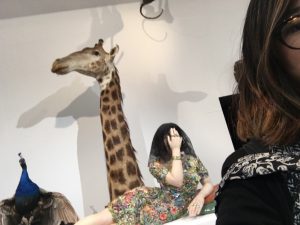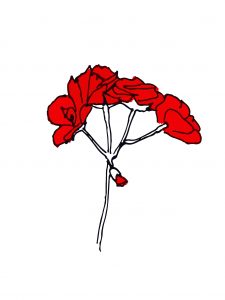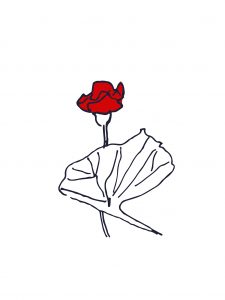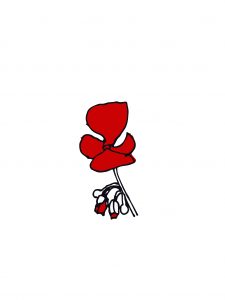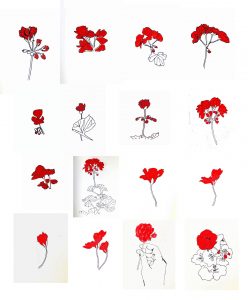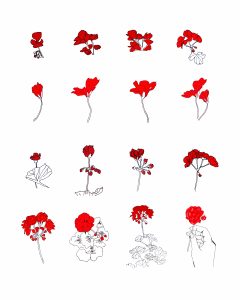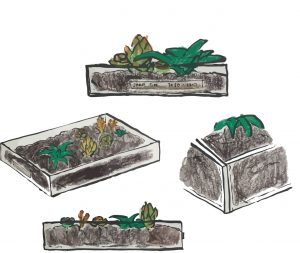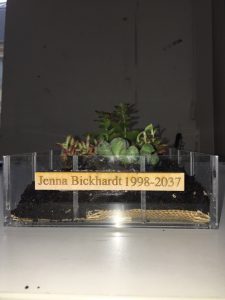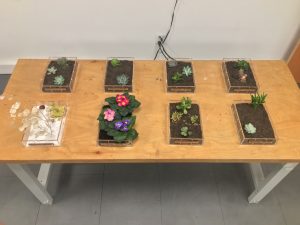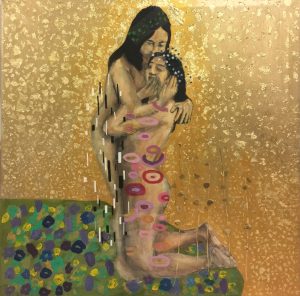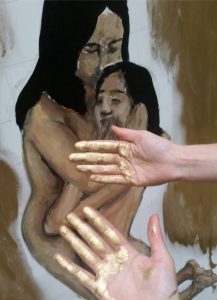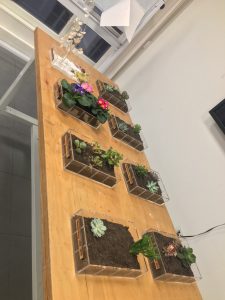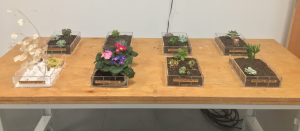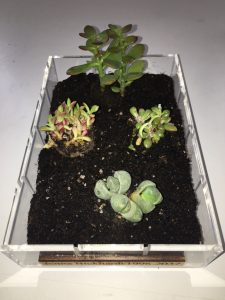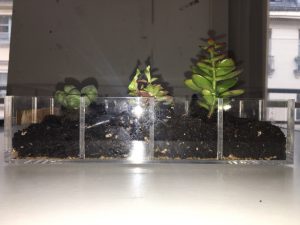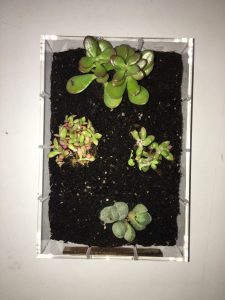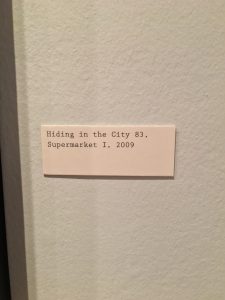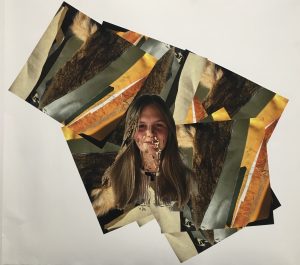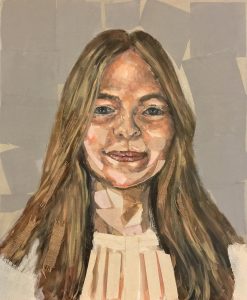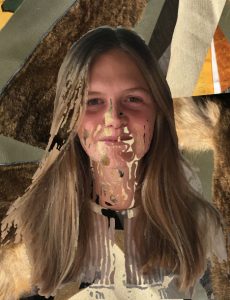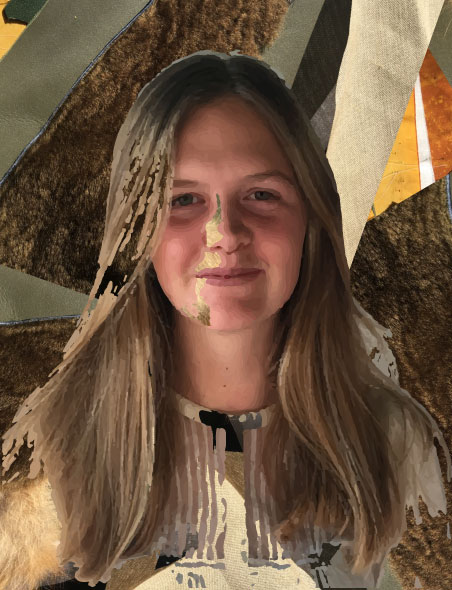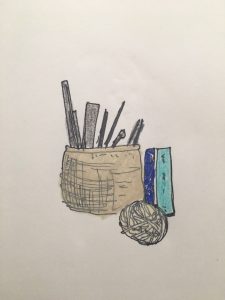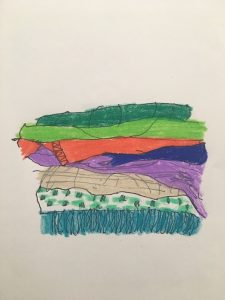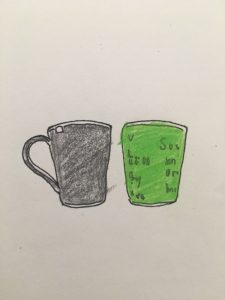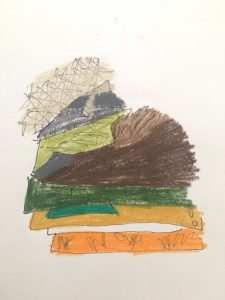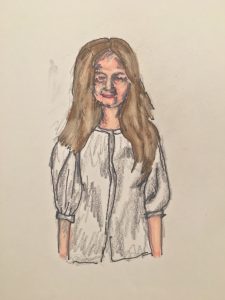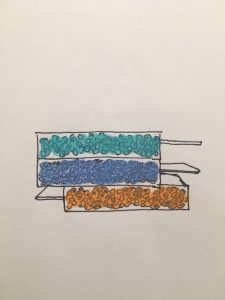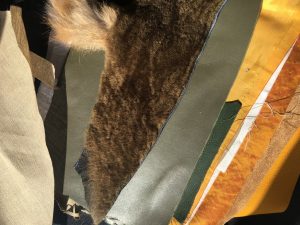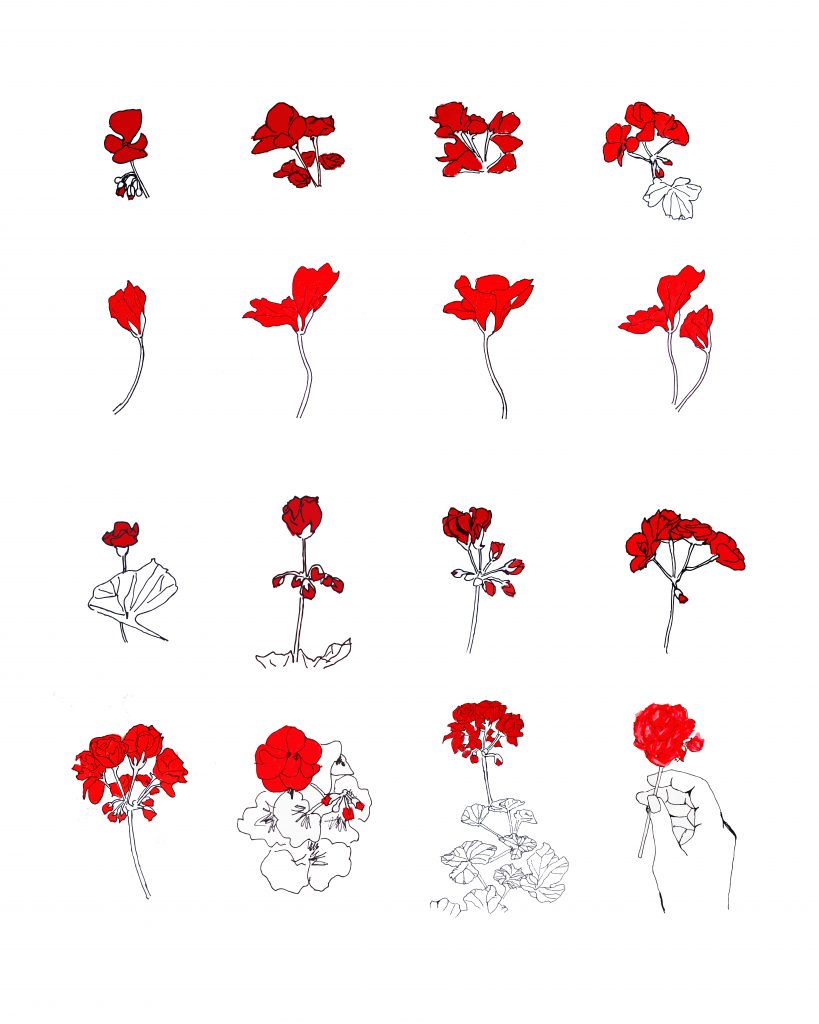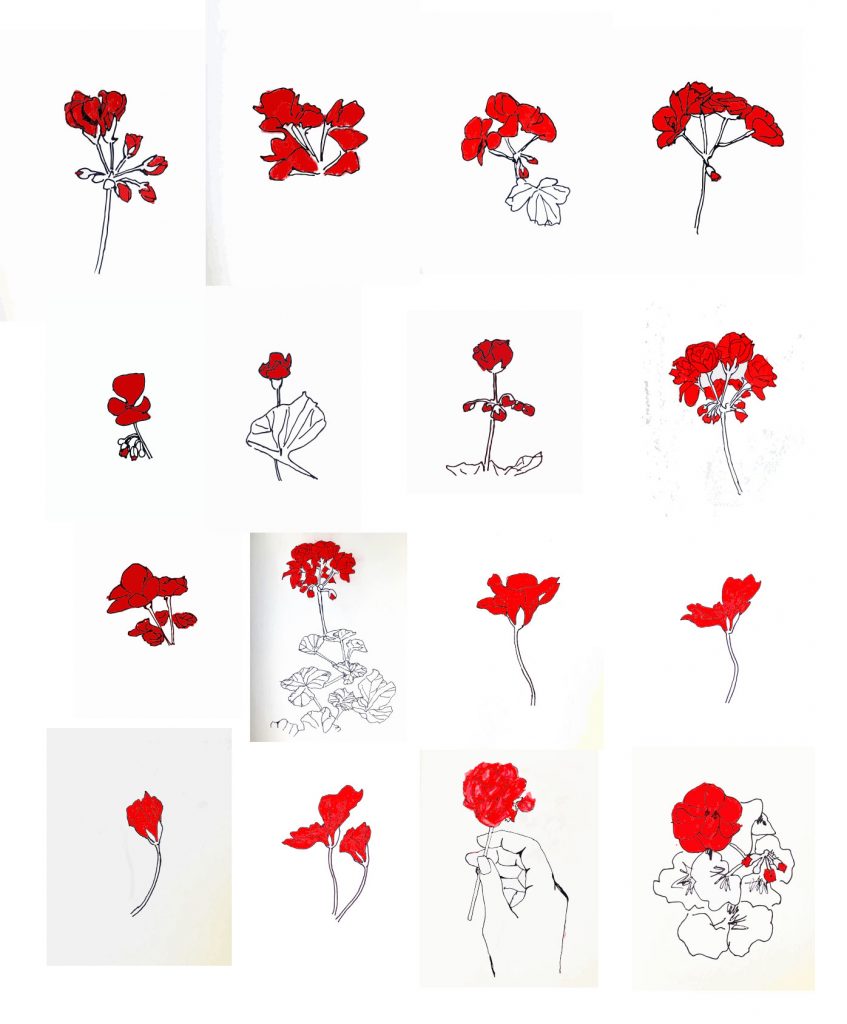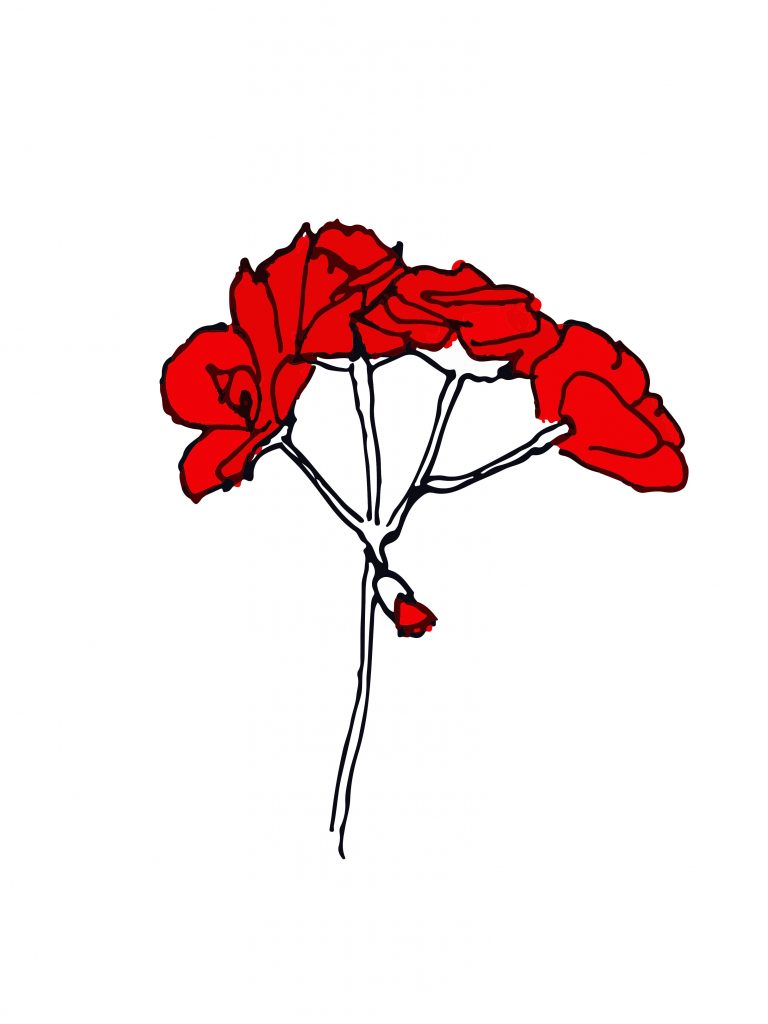The chosen work is an installation, sculptural piece titled Mes Morts, by Sophie Calle. It depicts the artist costumed likeness laying among various taxidermy. The setup is inclusive of a giraffe, a zebra, a peacock among many others. In the summary of the work displayed on the wall, Calle explains her rationality in her choosing of each animal, and the names she has attributed personally to each. The essence of the exhibition is a reflection of the temporal, on death in relation to life. Calle draws from the recent death of her father. A museum dedicated to the substance of the untimely demise of organisms is suitable for Calle to focus on such a theme. Where there is life there is death, and in this exhibition where there is death we are also presented with a construed sense of life.
Category: Integrative Studio 1
Studio Reflection Back Post
Highlight 1
The Derive: La Flânerie
As the first project I chose to visually depict the red flowers on the window boxes of Parisian buildings. I was inspired by my spontaneous walk down Avenue Montaigne, where I was confronted with a plethora of flower-box setups with red flowers. I created a sequential piece, enlivening the flower in a visual sense.
Highlight 2
Retrofuturism: Futuristic Burial Structures
For the first group project, upon our visit to cemetery Pere Lachaise, it became clear that traditional burial methods are wasteful in land, space, and materials. Our initiative was to find an architectural, more eco-friendly design, alternative method to burial sites. We created a set of eight prototypes, for a test layout, consisting of acrylic boxes, burlap fabric, soil, succulents, and wood plating. Hypothetically, the dead person’s ashes would be planted inside these garden boxes, and they could be arranged in either a vertical garden setup or a horizontal landscape area.
Futuristic Burial Structures Market Pitch-uj70vm
Highlight 3
Remake: Remake of Gustav Klimt’s The Kiss
Making a remake of Gustav Klimt proved to be a challenge. Remake was a difficult term to define conceptually. Once we found the direction we wanted to go in, the group proved to be highly cooperative and collaborative. We decided to remake The Kiss representing an idealized relationship more relevant to this time, the relationship one has with himself. We all worked together, each bringing our individual assets, to create a masterpiece of our own, one that still resembles Klimt’s. The process was very time-consuming, with many different adhesive techniques and collaging parts, and I could have never completed it on my own. Moving it as well from Boulevard Haussmann, down Rue Faubourg Saint Honore, all the way to Parsons Paris was an arduous process. It is that fact which represents how collaborative this project truly was, and how successful the piece turned out to be.
The most interesting component of Studio was the environment and aesthetic of the class. The creative process, production, and critiques prevalent in the course closely mimicked that of my high school AP Studio class. I learned, yet even more, that I enjoy and thrive in a Studio occupation environment. I also learned what role I play in a group work context, whether it be a leader in a group of less hard-working students, or just a hard-worker in a group of equally motivated students. This course closely bridged with seminar, and I would like to further explore a personal direction and articulation in a studio position.
Project 4
Remake – studio project 4-2l8tyly
Making a remake of Gustav Klimt proved to be a challenge. Remake was a difficult term to define conceptually. Once we found the direction we wanted to go in, the group proved to be highly cooperative and collaborative. We decided to remake The Kiss representing an idealized relationship more relevant to this time, the relationship one has with himself. We all worked together, each bringing our individual assets, to create a masterpiece of our own, one that still resembles Klimt’s. The process was very time-consuming, with many different adhesive techniques and collaging parts, and I could have never completed it on my own. It is that fact which represents how collaborative this project truly was, and how successful the piece turned out to be.
Project 3
Expo Liu Bolin
The images consists of a typical supermarket scene. It depicts shelves of noodles on sale and hidden within the noodles is Liu Bolin.
The camera angle is straight on, with what appears to be artificial lighting that leaves a very white background in the image. The setting feels staged, with light editing to refine boundaries and colors.
This photo was taken as part of the Hiding in The City Series, at what appears to be a supermarket. It was produced in the year 2009, as one of the pieces which would emphasize on Bolin’s ability to paint himself into a picture.
I connect with the image in the sense that it depicts a scene from everyday life; going grocery shopping. The colors are very appealing, as is the manipulation of them to articulate the artist’s point.
The meaning behind the work could range from Bolin’s commentary on daily routine to opposition against a system. The strengths include the artistic manipulation of color and pattern to truly hide the artist within. Weaknesses could be a lack of authenticity on the edges of the image, which give off a staged sentiment.
Project 2
The artistic intent is to use the combined medium method of acrylic on canvas and textile layering and collage approach to create a portrait of Simone Brerup which both captures her essence and existence and will subtly reflect the idea that behind her identity is an inability to recognize herself.
The approach that I took for this environmental portrait varied into two separate mediums and processes. My first path appeared in a digital mockup of my planned painting process. I continued to digitally manipulate a photo of Simone atop close-ups of her textiles for one of the two techniques. For the second medium, I used acrylic on canvas with fabric collage to create a portrait as unique as Simone, yet representative of a similar theme: the layers which make up Simone. The part of this process I most enjoyed was the initial documentation and collaboration with another student. Simone was willing to take the time and the effort to contribute to the positive outcome of my project. The most challenging part was to honor someone’s image accurately. The pace of the project was adequate, and collaboration was vital to its success. My current preference is to have a project with defined outcomes, but one which begins with open-ended response, indicating an initial high level of artistic freedom and creative space resolving into timeliness and accuracy. I did not have a sense of achievement with this project because I feel that while I captured one aspect of Simone, I was not capable of capturing all of her. The ability to observe surroundings into artistic interpretation is vital in the creative process for future projects.
Project 1
You see, the most fantastic thing on Avenue Montaigne came at no cost at all. I continued down past the second Dior with the baby blue awnings, and my view was suddenly visually overcompensated with an incredible amount of bright red. It was the same red that was on that floor length Versace gown two blocks before, a red that calls to the passion in your soul, that brings you back to thoughts of Valentine’s day, a red resembling of cherries you put on your ice cream. However, this red was not man made, not a product being sold in a window display; this red was natural, pure, ever more moving. It was the red on the rows and rows of awnings of the grand Hotel Athenee, and the red of the billions of flowers which sat below each one of the hundreds of windows, above each red awning.
I had never seen a more beautiful sight. Red petal after red petal, immersed among a little forest of deep green vegetation, growing on the side of the large spanning old architecture facade of this hotel. As if to feel the need to bar in the magic of it all, black iron terraces jut out from the beige sandstone underneath each flower box. I was so inspired by the visual aesthetic that I worked up the courage to ask the concierge if I could pick just one of the red flowers for myself. My broken french was well relieved when the man plucked a red blossom for me, a “Je vous en prie” entailing it. Looking down at the soft petals of the flower in my hand, and then above at the stripes upon stripes of red flower balconies I began to appreciate the hotel and its red flowers for more than just visual aesthetic.
A moment like this defined what I see the Parisian experience as, in terms of seeing the world in a more beautiful, romantic, and inspired way. In Paris one can stop and smell the roses, as one can stop and look at the red geraniums. One can commit la flânerie all day. Here it is not about the promotion you may get one year from now, it’s not about paying off the mortgage. It’s more about going grocery shopping everyday for fresh produce and a baguette, or having that glass of wine with friends over dinner. It is these simple habitual acts which bring the people of this city the most joy. The ideal of Paris is that the simple things are the most beautiful, the most articulate, the most full of life.
Reflection
The most challenging part of this project was starting it. The rubric was extremely open-ended, making it intimidating to commit to a subject matter. Once found, execution of the project went smoothly. The inspiration was the red geraniums on the facade of the Hotel Athenee and their bright red color. The best feedback I received was that my sketches resembled “flowers dancing” which brought me to the idea to create a sequential piece. Changes to be made would be digital cleanup, and next action could be better versing in digital illustration, such as the illustrator image tracing function.
